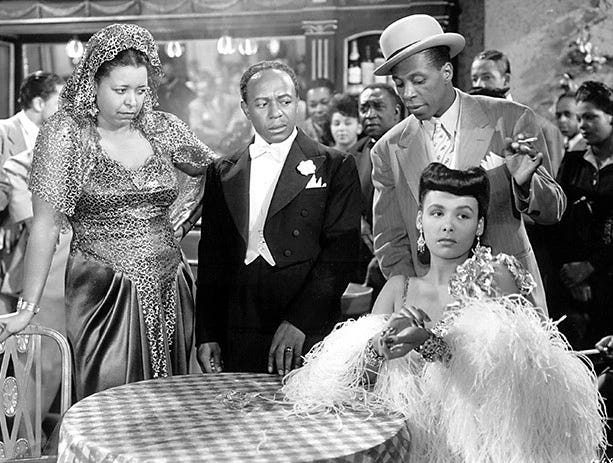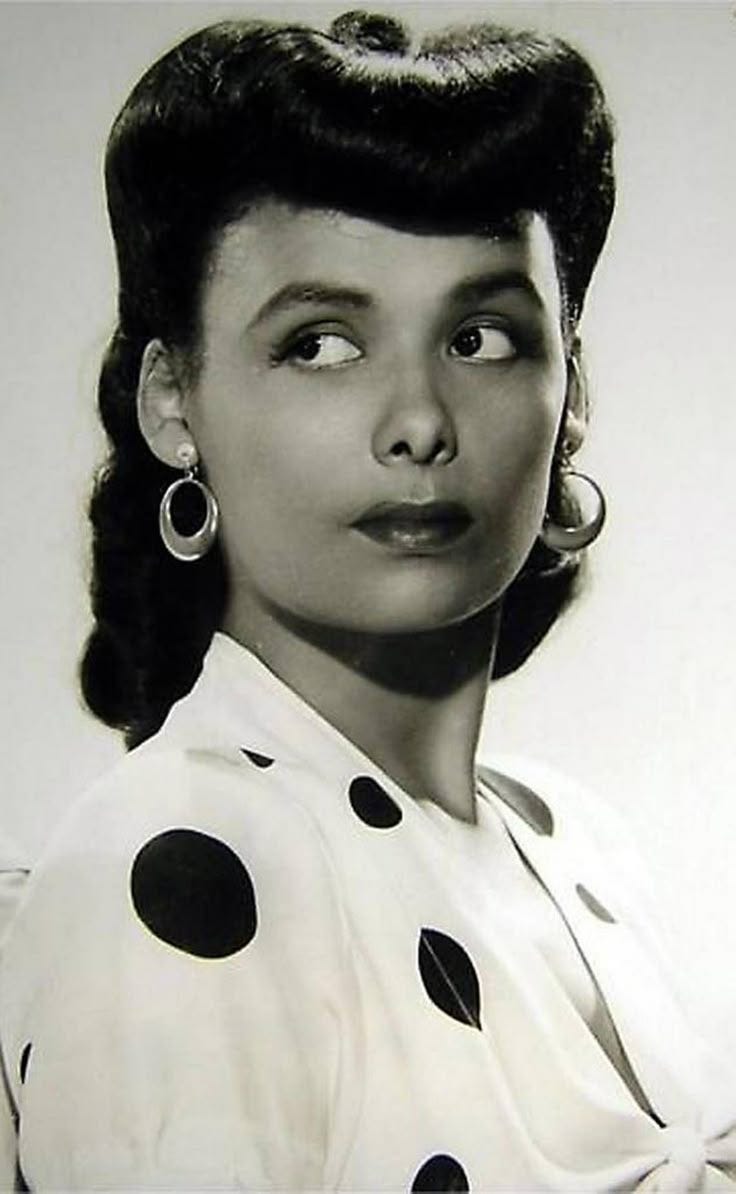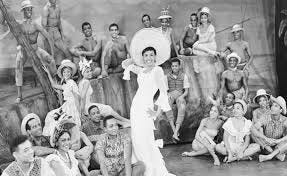The country was in the midst of the Second World War. Lena Horne like many of her contemporaries wanted to do her part. She went to Fort Riley in Kansas to perform for the soldiers who were training there.
When she arrived she was informed that the white and black solders were not allowed to sit at the same performance. She would be allowed to perform for the white troops and then come back the next day to perform for the “Negros.” Reluctantly, she agreed to the terms.
But when she arrived at the Fort for that second performance she found that the rows of seats closest to the stage were filled with white men. The black soldiers were seated behind them. When she asked what was going on it was explained that the white men were German POWs.
White men who had tried to kill Americans were given preferential seating to the black soldiers who risked their lives to protect America.
Horne tried to position herself so she could sing to the black soldiers with her back to the Germans but the venue wasn’t set up for that. Furious, she abruptly stopped to show and stormed off.
For Horne, it was a brutal reminder of how America prioritized whiteness above all else.
And yet even in her rage she knew she herself had benefited from her proximity to whiteness. She had two biracial parents. Her first job as a performer was at a Cotton Club in New York that required all its “colored” dancers to have skin lighter than a paper bag. She had a beautiful voice and an amazing stage presence. But she knew that when the head of the NAACP, Walter White, held her up to the Hollywood studios as an example of the kind of “colored actress” they should be casting it was, in part, due to how her face and form matched white beauty standards.
But that didn’t mean that White America saw her as an equal.
When she moved to Los Angeles in 1941 she was 24 and a divorced mother of two. One of her white friends rented a house for her to stay in. Immediately the neighbors petitioned to have her evicted on account of her race. It was only due to the intervention of Humphrey Bogart, who lived next door, that the other neighbors reluctantly agreed to drop their protests.
Upon signing with MGM she received assurances that she would never be cast as a maid. And the start of her movie career was indeed promising. She was cast in two all black films.

Those films were made when Eleanor Roosevelt and America’s War Department were encouraging Hollywood studios to cast black actors in more flattering roles that encouraged patriotism and might inspire the African American population to enlist. But as WWII wound down so did the roles for black actors. Soon Horne found she had no choice but to take roles in which she had only one scene…a scene designed to be neatly cut out for the Southern States where seeing a black character who wasn’t subordinate was considered offensive.
Horne would have liked to work in conjunction with other black Hollywood actors to improve treatment of minorities in films, but Walter White’s endorsement of her over the more experienced African American performers of darker complexion made her a pariah to her peers. Hattie McDaniel was the only black Hollywood actress who stood up for her.
In Horne, McDaniel recognized a kindred spirit: another female performer trying to make a living in a racist world any way she could. “You have two babies to feed,” McDaniel reportedly told Horne after inviting her to her home, “you do what you need to do (to make it here).”
With McDaniel’s support and advocacy, Horne became the first black board member of the Screen Actors Guild (SAG). Horne also married a MGM white composer/conductor whom she thought would help her cross the color line in her career (although, by her own admission, the only Hollywood man she ever truly fell for was Orson Wells with whom she once had a romance).
But nothing helped. Every year she was offered fewer and increasingly meager roles. In the end she left Hollywood noting wryly, “They didn’t make me into a maid, but they didn’t make me anything else either.” She decided to return to New York and try her fortunes again there.
That’s when her career really took off.
She became the most successful night club singer of her time and ended up taking her performance on tour through the States as well as Canada and Europe. Hers became the bestselling album by a female recording artist in RCA history. She took a role in a Broadway musical called Jamaica and was nominated for a Tony for her efforts, a first for a black actress.
She also became increasingly intolerant of racism. In 1960 she went to Luau, a popular restaurant in Beverley Hills after one of her shows at the Coconut Grove. At the restaurant Harvey St. Vincent, the VP of a prestigious engineering firm, demanded a waiter serve him immediately. The waiter who was on his way to Horne’s table promised he’d be with him as soon as he served Miss Horne. The man became belligerent and while talking to his dinning companion loudly referred to Horne as a “…just another black n**r.”
Horne who was seated in a level just above him leaned over the partition and said, “I can hear you and I want you to stop making those insulting remarks.”
He didn’t. Instead he continued his racist tirade, calling her a “n**r bitch” amongst other things.
Horne did not ask for him to be thrown out. Instead she threw a heavy ashtray filled with cigarette butts at his head. Then she threw a hurricane lamp at him, then another. Her attack left the man stunned, bleeding and according to her, “all red in the face and evil.” The police were called but St. Vincent, humiliated and disoriented, refused to go to the police station to press charges. Instead he left the restaurant as quickly as possible.
When confronted about the incident by the press the next day Horne explained demurely to Time magazine, “I’m sorry he had to learn in such a violent manner that people don’t like to be insulted. But I don’t go for that stuff.”
Of course Horne’s activism went beyond standing up for her own personal dignity. She also rallied with Medgar Evers in Mississippi in the name of the NAACP. She spoke for the NAACP at the March on Washington, she worked with Eleanor Roosevelt in attempts to pass anti-lynching legislation. Through all of this she continued to perform.
Then, in 1980 Horne announced her retirement.
In 1981 she was back on stage with a one-woman show, Lena Horne: The Lady and Her Music.
It ran for 333 performances on Broadway and to this day it holds the record for the Broadway’s longest running solo show. She went on to take it on a 41-city tour through North America before taking it to Europe. It won her her first Tony and although she was offered other opportunities after the show wrapped, she essentially decided to make The Lady and Her Music her swan song, ending her public-performing career on a high.
Lena Horne died in 2010 at the age of 92. Thousands attended her funeral.
I loved writing Lena Horne into The Great Mann. I loved weaving the complexities of her relationships with other actors in Hollywood into my story and felt privileged to be able to channel her humor and spirit.
Lena Horne was a true diva and one worthy of tribute.








Thank you for sharing stories about Lena Horne. As I recall, didn't Walter White have blond hair and could pass as a White person himself? Hard to understand why skin color is important. I think it has something to do with the specter of slavery in American history. It was NOT the land of freedom for some people in the USA.